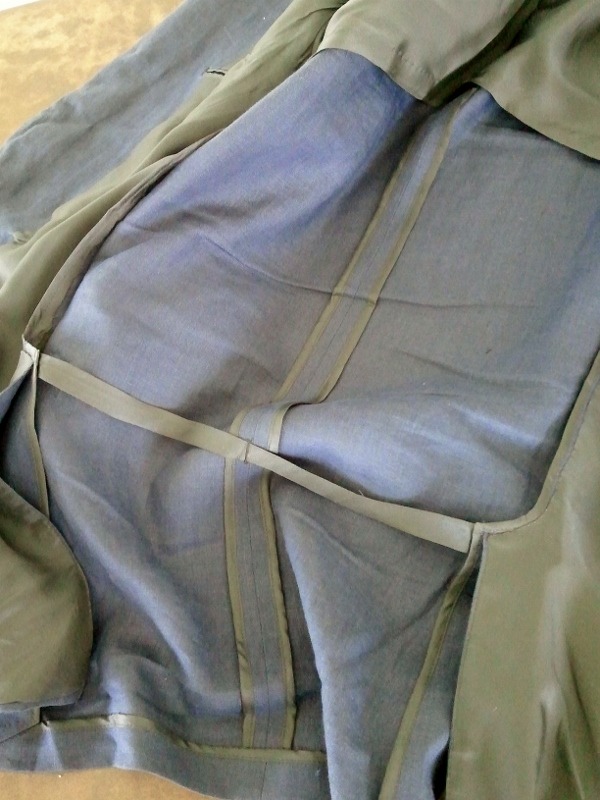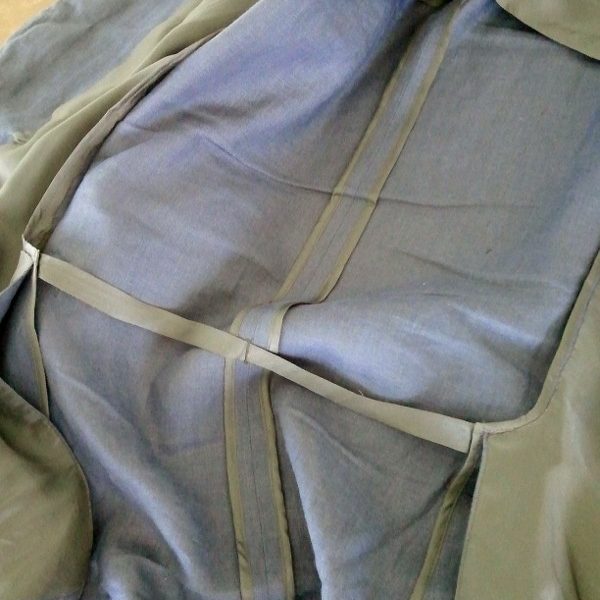
A week or so ago, I picked up this jacket at a thrift store. It didn’t need too much adjustment to fit well, and it filled a hole in my wardrobe – a linen blazer. Since I live in Los Angeles, staying comfortable in the summer is a priority, and linen does the trick.
There was only one problem: the jacket was fully lined. Linen is cool and breathes well. The same cannot be said of the materials used to line coats, like bemberg, an early plant-based synthetic. Lining fabrics are designed to be slick and lightweight, but they’re not designed to be cool in warm weather. Lined linen is fine when the temperature’s 75 or 80, but I wanted a coat I could wear when it was 85 or 90, so I took the coat to my tailor for some alteration.
The lining in the shoulders and sleeves is functional. Without lining there, your coat can hang up on your shirt, causing rumpling, bumps and other unsightly malformations. It’s also functional in the chest, where it performs the same duties, and also covers up the structure of the chestpiece and pockets. There are totally unstructured coats that have almost none of this extra stuff in the chest, but this wasn’t one of them, so I wanted to retain that lining.
The one place where the lining isn’t functional at all is on the back. Manufacturers use lining there for a uniform look, and because it’s cheaper to line the back fully than to clean up the insides to look presentable. Luckily, I’d bought the coat for $25, and wasn’t averse to putting a bit more money into it to make it summer-friendly.
I had my tailor remove the lining along most of the back. This involved cutting away the lining, but also “taping” the now-visible seams. This keeps them from catching on the shirt and makes them look finished. He left a strap across the lower back to help the coat retain its shape, but that’s optional. The result was a coat with dramatically less lining that will keep me much cooler in the summer.
This isn’t just a great option for summer, either. Less lining in a jacket means you can wear heavier fabrics in warmer temperatures. Heavier fabrics almost always look and drape better than lighter, finer ones. Unless it’s winter and you’re trying to maximize warmth, a less-lined coat is more versatile and comfortable. That’s why jackets were rarely fully lined until mass manufacturing prevailed over traditional tailoring in the 60s.
My tailor charged me a bargain price for the service – $35. Since it’s not a frequent request, prices vary, but generally cutting out the back and taping the seams will run you somewhere around $50. When the mercury climbs here in LA, I’m sure I’ll be glad I spent the money.
